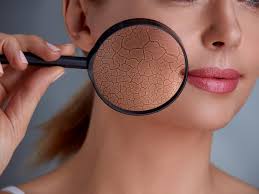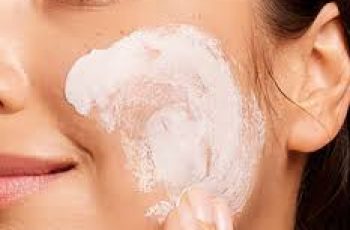
What are the barriers to healthy skin?
What is your biggest skin problem? We call skin problems “barriers to healthy skin”.
There are four main issues that can get in the way of your skin health and you must consider them when choosing the right skin care products.
The first step to having healthy skin is to identify your skin problems and determine your Bowman skin type.
Your Bowman skin type takes into account the four main skin problems we call barriers to healthy skin.
Once you know your skin type, you can follow our healthy skin recommendations based on your skin type. Your skin type determines which skin care products can make your skin healthier.
When choosing the best skin care products and other options for healthier skin, you must first identify the signs of unhealthy skin and their causes.
You may have skin problems that you don’t realize you have. We’ll help you!
If you want healthy skin and want to improve your skin health and appearance, you need to eliminate any barriers that are getting in the way of your skin health.
Tips for healthy skin:
Determine your Bowman skin type.
Use skin care products that target potential barriers to skin health.
Use products in the best order for your skin care routine.
Combining with other products can increase efficacy and avoid side effects.
The Baumann Skin Typing System is based on the presence or absence of these four barriers to skin health.
If you have any of these skin issues, a targeted, personalized skincare routine that removes barriers to healthy skin is the best way to achieve healthier skin.
The 4 Most Important Skin Issues
To figure out what barriers you face and find products that address them and improve skin health, you first need to know your Baumann skin type.
Take the quiz.
What causes unhealthy skin?
Signs of unhealthy skin include dehydration, inflammation, hyperpigmentation, wrinkles, and sensitive skin that easily hurts or cracks. There are four main barriers to healthy skin:
The Four Barriers to Healthy Skin and Skin Issues
Dehydration:
Dehydrated skin is dry skin.
Dehydrated skin contains less water than healthy skin needs. This is because more water evaporates from the skin. This is called transepidermal water loss (TEWL).
Increased TEWL1 leads to dry, dehydrated skin.
What causes dehydrated skin and transepidermal water loss?
A damaged skin barrier causes water to evaporate from the skin. A damaged skin barrier occurs when the lipids (fats) (i.e., ceramides, fatty acids, and cholesterol) are not in the right ratio
Dehydrated skin causes inflammation.
Why is dehydrated skin bad for skin health?
Dehydrated, dry skin feels rough and dull. The rough edges of skin cells act on the surface of the skin by creating friction when they come into contact with rough surfaces such as wool and fabric. This creates small cracks in the skin through which irritants, allergens, microbes, chemicals, and pollutants can penetrate and cause inflammation.
Many people have dry, itchy skin, and scratching can lead to inflammation. Sensitive skin may experience pigmentation disorders and uneven skin tone.
Enzymes in the skin require water to perform many of their building and protective functions. Dehydrated skin can lead to reduced enzyme activity and changes in skin cells in the upper layers of the epidermis.
3 For example, in dehydrated skin, the upper layers of the stratum corneum (the outermost layer of the skin) are not shed properly4 and are deposited on the surface, making it rough, uneven, and opaque.
This is why dry skin looks dull and loses its radiance. Darker skin with dry skin can appear grayish because dead skin cells build up on the pigmented skin cells.
Dehydrated skin can lead to a compromised skin barrier. In other words, dry skin can lead to inflammation, pigmentation spots, and skin aging.
That’s why dehydrated skin is the first goal of any healthy skin care routine.
Inflammation and skin dehydration should be treated first.
Inflammation:
Inflammed skin is sensitive skin.
Sensitive skin is more prone to inflammation such as acne, rosacea, redness, and burning. Anti-inflammatory cosmetic ingredients such as green tea can soothe inflamed skin.
However, for the best treatment results, it’s important to find the cause of inflammation.
What is inflammation?
Inflammation occurs when cell signaling molecules cause blood vessels to dilate, resulting in redness on the skin, known as erythema.
The red color appears because larger blood vessels allow more blood to be seen through the skin.
Blood vessels dilate and cause redness.
What causes inflammation?
Many different cell signaling molecules cause inflammation, such as cytokines, arachidonic acid, bradykinin, histamine, prostaglandins, activation of Toll-like receptors, and interleukins.
Histamine not only dilates blood vessels, but also causes swelling and itching. It is difficult to know all the inflammatory pathways that cause inflammation.
It is important to understand why these inflammatory pathways are activated.
Once inflammation begins, regardless of the cause, different pathways activate each other and trigger an endless cycle of inflammation.
What types of inflammation can occur on the face?
Acne, rosacea, burning skin, itching, skin sensitivity, or pink/red discoloration are all types of facial inflammation. Other types of inflammation can also occur with allergic skin.
Skin allergies can also be accompanied by inflammation.
Why does inflammation harm skin health?
Inflammation produces free radicals and activates destructive skin pathways, leading to thinning and wrinkling of the skin.
Inflammation also stimulates melanocytes to produce pigment (melanin) in unevenly colored skin.
Skin inflammation6 has been linked to systemic inflammatory diseases such as diabetes, heart disease8, and Alzheimer’s disease7. For children, skin inflammation increases the risk of food allergies.
Pigmentation:
Pigmentation refers to uneven skin tone
In the Baumann skin classification system, skin type with dark spots is defined as skin with uneven skin tone.
Uneven skin tone is associated with a feeling of unhealthy skin.
9 10 11 Uneven skin tone may be described as dyspigmentation, hyperpigmentation, post-inflammatory hyperpigmentation, dark spots, or pigment changes.
If you have dark spots and uneven pigmentation on your skin, you need to use lightening ingredients to balance the melanin distribution in your skin.
Causes of dyspigmentation and hyperpigmentation in the skin
Uneven skin tone is caused by skin cells (melanocytes) producing too much melanin. Melanocytes increase melanin production and/or the transfer of melanosomes containing melanin to skin cells. Increased pigment production causes uneven skin tone because light is reflected unevenly in different areas of the skin due to different melanin distribution.
Uneven pigment distribution causes uneven skin tone.
Skin problems that cause uneven skin tone
There are many reasons for uneven skin tone. One common cause of this condition is inflammation.
Inflammation stimulates melanocytes to produce more melanin, resulting in post-inflammatory pigment changes (PIPA).
Other skin conditions that cause uneven skin tone include melasma, acne, eczema, tinea versicolor, hemochromatosis, and any skin condition that causes inflammation.
Aging or mature skin:
Aging skin is prone to wrinkles.
Wrinkles are caused by lifestyle.
The causes of skin aging are being studied more and more thoroughly. Skin aging shows molecular mechanisms that cause skin sagging, fragility, and wrinkling.
There are two main types of skin aging:
Intrinsic skin aging is caused by genetics and normal cell metabolism.
Extrinsic skin aging is caused by sun exposure, light, pollution, and other harmful influences that activate destructive processes in the skin, causing skin aging.
Unhealthy lifestyle habits increase the risk of skin aging.
Both intrinsic and extrinsic skin aging can be prevented or treated with anti-aging agents such as antioxidants and retinoids.
Causes of skin aging
Lifestyle habits such as UV rays, stress, lack of fruits and vegetables, smoking, vaping, and environmental pollution activate harmful processes that damage the skin.
Inflammation also activates these aging processes by producing free radicals, which damage cell structures, causing skin aging.
Dehydration also causes skin to age faster. We know that cellular senescence, autophagy, and environmental pollution also contribute to skin aging.
Does Skin Type 10 need products to stay healthy?
How to treat unhealthy skin and improve the barrier of healthy skin?
Treatment of skin problems depends on your Baumann skin type.
You should buy products and develop a skincare routine based on the signs of unhealthy skin. Here are the 16 Baumann skin types.
Please note that only skin type 10 is a perfectly healthy skin type. Everyone has at least one problem that causes unhealthy skin.
16 Baumann skin types and skin problems
Once you know your Baumann skin type, you can buy products, develop a skincare routine, read reviews, and get information about your Baumann skin type.
Take the quiz
Your daily skincare routine should include products that specifically address your skin health barriers. The goal is to transform the unhealthy parts of your skin into healthy parts. Here are:
Skin problems and skin problems that hurt and help your skin
Skin Type Solutions’ mission is to improve skin health around the world. The first step to having healthy skin is to find out what barriers are holding you back from skin health.
Tell your friends – spread the word – together we can encourage the world to overcome these barriers and achieve the healthiest skin type possible.
You can also sign up to become an ambassador, collect points, and help improve skin health around the world through your awareness.


